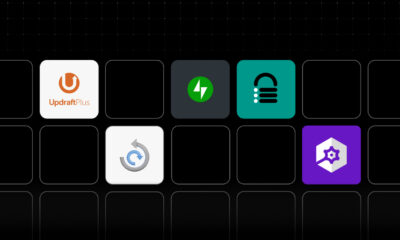WORDPRESS
Top 11 Best eCommerce Website Builders that Build Perfect Store
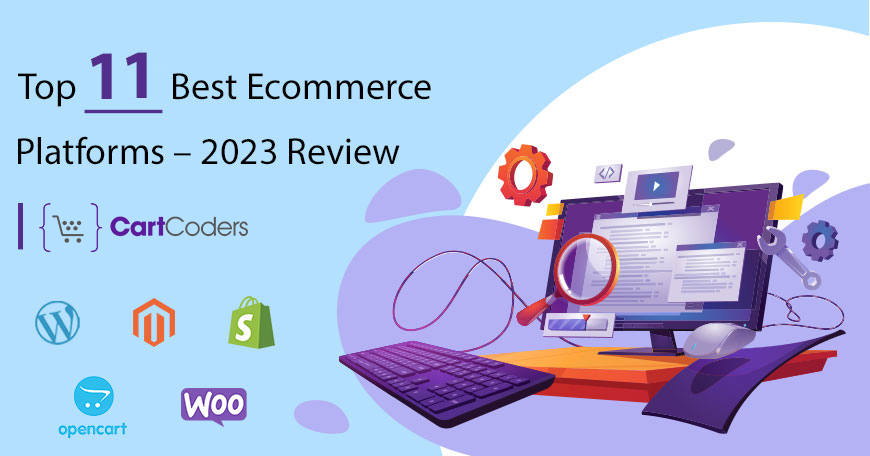
You may quickly and easily overcome the challenges of e-commerce with the aid of a reliable e-commerce website builder. By doing this, you might attract customers and start making profit right immediately.
You may stand out by using one of the many user-friendly website builders for online retailers.
Are you interested in learning which website builders work best for e-commerce? Check through the list of online storefront builders you may use to launch an e-commerce firm instead if you’re searching for a detailed assessment.
Top 11 best ecommerce website builders
1. Shopify
The greatest e-commerce website builder for creating integrated stores
Using Shopify to put your business online is the quickest and safest option. With Shopify’s e-commerce platform, you can easily create an online store without knowing how to code or having a large budget. More than a million companies use the Shopify platform, which is renowned for its low rates, gorgeous website designs, and practical marketing tools.
If you want to start a Shopify store, you can select from more than 100 expert templates that come with built-in features like SSL certificates, domain hosting, custom domains, abandoned cart recovery, and other strong tools to help you attract customers, close deals, and run your daily business. Through Shopify’s native partner integrations, you can sell an infinite number of items through your online shop and on several marketplaces, including Amazon, eBay, and Etsy.
Features include:
- More than 100 premium themes were created by illustrious creators like Happy Cog and Pixel Union.
- Customers may make purchases using any smartphone or tablet thanks to the built-in mobile commerce shopping cart.
- Full access to the HTML and CSS for your store, allowing you to completely customize your online store.
- Stores that are optimized for search engines to make it easier for internet users to discover you
- Easy inventory management that allows you to monitor stock levels and stop product sales when they run out.
- There are no restrictions on the number of things you may sell in your shop.
- You will never be charged based on how much traffic your business receives because of the unlimited bandwidth.
- Analytics and reporting made simple
- Integration of the Shopify POS system to link physical and online stores
- An app shop with more than 4,000 tools for marketing, sales, and customer service
- Mobile application for company management while on the go
- Accessible customer service personnel are available. Through email, live chat, and phone, every day of the week, around the clock.
Through Shopify Payments, accepting payments online is also made simple. More than 100 worldwide payment options and gateways, including Shop Pay, PayPal, and Bitcoin, are available for you to interact with. Additionally, you may utilize one of the over 4,000 free Shopify applications to increase online sales and expand the functionality of your business.
- Price:- Sign up for a free trial of Shopify now; no credit card is needed. Paid plans begin at only $39 per month.
- G2 rating:- 4.3/5 ⭐
2. 3dcart
Best e-commerce website builder for physical stores
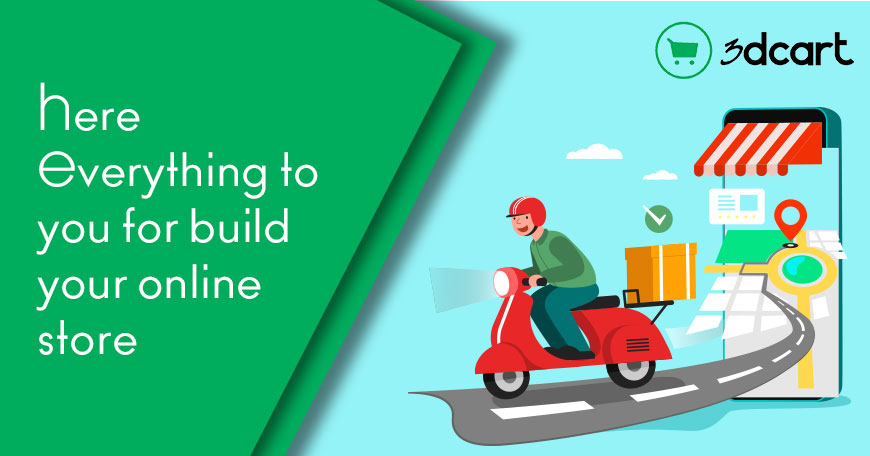
3dcart is a basic shopping cart for merchants looking to sell online. Its capabilities aren’t as broad as those of other site builders like Shopify or Wix, but with appealing pricing, decent sales reporting, and mobile-responsive templates, For business owners who need to rapidly create an online presence, this builder is their go-to option.
Features include:
- 160+ payment alternatives, all linked to your store without the need for coding
- Over 90 free website layouts to get you started.
- Built-in SEO features to boost website search visibility
- Abandoned cart notifications to help get back lost sales
- Good Zapier connectors can help you increase the functionality of your store.
While 3dcart offers several useful e-commerce tools, you don’t have much creative control over your businesses. The builder is difficult to use because the templates are restricted.
- Price:- 15-day free trial. Paid plans start at $19/month.
- G2 rating:- 3.8/5 ⭐
3. Weebly
The most effective free online e-commerce builder for small enterprises
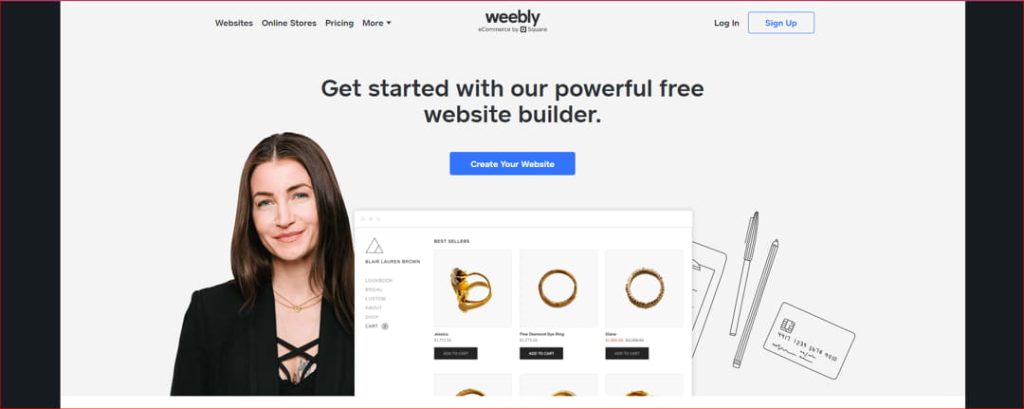
Weebly is an easy online store builder that is powered by Square. It’s great for small to medium-sized enterprises who want a simple online store but don’t want to deal with a lot of upkeep. Weebly is a fantastic alternative if you’re a newbie who doesn’t want to get bogged down in technical details.
Weebly allows anybody to create a free website. However, you won’t be able to use your domain name (or remove the obnoxious advertising) unless you purchase a subscription. The free plan includes a few useful services, such as real-time delivery and discounts, but if you want to go beyond that, you must subscribe.
Features include:
- Simple website builder and management platform for inventory and orders
- Bulk inventory capabilities for editing large batches of items and importing/exporting data Mobile-friendly websites
- Simple coupon creator (for premium plans) for creating store promotions
- A simple drag-and-drop builder and media library will guide you through the process of creating a website.
Square is also available online for business owners that use it for payments. You can create a professional e-commerce website with no frills in minutes, similar to Weebly.
- Price:- Free. Paid plans start at $6/month.
- G2 rating:- 4.2/5 ⭐
4. Squarespace
Best e-commerce website builder for designers

Squarespace is the next e-commerce site builder on the list. Its drag-and-drop builder makes it simple to use even for those with no technical skills. Like Wix, it began as a standard website builder rather than an online selling platform, so there may be a minor learning curve when putting up an online store.
Squarespace provides well-designed templates to help you get started developing your store. After selecting a design, you may change the colors, text, and graphics to match your brand. You cannot, however, sell anything online unless you switch to a premium subscription.
You can only take payments using Stripe, PayPal, Apple Pay, and Afterpay while utilizing Squarespace as your e-commerce solution. When you join the Commerce Advanced plan, you will be able to offer gift cards and subscriptions.
Features include:
- To design your store, use a drag-and-drop builder with configurable templates and basic layouts.
- Image scaling and automatically responsive web design
- WYSIWYG editing that is specific to content types and complicated layouts
- The capacity to market an endless number of goods
- Email sequences are sent automatically after a purchase
- Finance, marketing, shipping, and sales expansions are all possible.
You can always convert your basic website into an online shop if you don’t want to deal with setting up Squarespace’s e-commerce functionality. You can add the Shopify Buy Button for $5 per month and have access to over 100 payment choices, sales and growth tracking, simple shipping connections, currency support, and more.
- Price:- a three-day free trial. The Basic Commerce package costs $26 per month.
- G2 rating:- 4.4/5⭐
5. BigCommerce
Best e-commerce website creation software for large businesses

Large enterprises may create online storefronts using BigCommerce. It provides web hosting as well as several customization possibilities for tech-savvy business owners looking to grow. You cannot register a domain name with BigCommerce, therefore you must purchase one elsewhere and connect it to your store.
Advanced features of BigCommerce include worldwide selling capabilities, SEO applications, optimized storefronts, and multichannel sales capabilities on social and online selling sites—but these features are more sophisticated.
Features include:
- A visual editor featuring a drag-and-drop tool for editing website pages
- Themes that support HTML, CSS, and JavaScript customization
- Customize your checkout experience with a server-to-server checkout API and SDK.
- Payment possibilities using digital wallets such as Amazon Pay, Apple Pay, and others
- Cross-channel commerce using marketplaces like Amazon and Google Shopping
- Support for several languages and currencies to facilitate worldwide sales
BigCommerce’s lack of flexibility and ease of use were big issues for retailers such as Grace & Lace. Grace & Lace opted to switch to Shopify Plus, Shopify’s enterprise offering, after attempting to work with the platform. This provided them with sophisticated business tools and add-ons for its new Shopify Plus shop, as well as confidence in achieving 20% year-over-year growth since transferring.
- Price:- The cost is a 15-day free trial. Monthly fees for paid plans start at $29.95.
- G2 rating:- 4.2/5 ⭐
6. Wix
Individual sellers should choose the best e-commerce website builder.

With its non-technical website builder, Wix is now taking on online stores in accordance with the e-commerce sector trend. You may design an online store that suits your requirements by using Wix’s simple drag-and-drop builder. Wix provides customizable templates, domain name registration, and web hosting to make it simple to go online.
The major disadvantage? You can create a free e-commerce website, but you won’t be able to sell anything unless you switch to a premium plan.
Features include:
- Make use of a user-friendly editing interface to build your online store.
- Templates from the storefront through the checkout that may be altered to meet your needs.
- Integrations to help with product sales on eBay, Google Shopping, Facebook, and Instagram.
- Customer’s personal information and payments are protected by a free SSL certificate.
- Product pages that have been SEO optimized will rank better in search engines.
- The ability to import inventory CSV files into your shop
Wix provides a few useful tools for managing your e-commerce business. It lets you track orders, accept online payments, sell across numerous channels, and create abandoned cart campaigns. Wix’s basic plan, on the other hand, lacks critical inventory management tools such as low-stock notifications, tax calculators, and dropshipping options. If you have a large inventory, you’ll need ecommerce software with better inventory-tracking features.
- Price:- Business Price The basic plan starts at $23 per month.
- G2 rating:- 4.2/5 ⭐
7. GoDaddy
The best platform for beginners to start an e-commerce website

GoDaddy is a website builder that you might be familiar with, but it can also be used to launch an online store. Building an e-commerce site with GoDaddy is quick and simple thanks to its beginner-friendly construction that makes use of artificial design intelligence. You must provide information to quickly create a personalized website.
Features include:
- More than 100 mobile-friendly designs for e-commerce websites
- interactions to social media sites like Instagram and Facebook
- across all platforms and markets, automatic control of sales and inventory
- A variety of payment options, such as Google Pay and Venmo
- the connection between retail and internet enterprises through integration with Square Point of Sale
The drawback is that you don’t have a lot of artistic freedom. GoDaddy provides built-in capabilities for SEO and email marketing campaigns, but its features aren’t very robust. Even though you may launch quickly, a GoDaddy website can only support the sale of up to 1,500 goods. Therefore, GoDaddy wouldn’t be the finest e-commerce site builder for you if scalability is what you’re searching for.
- Price:- The e-commerce plan starts at $24.99/month.
- G2 rating:- 3.9/5 ⭐
8. WooCommerce
Best open-source e-commerce website builder
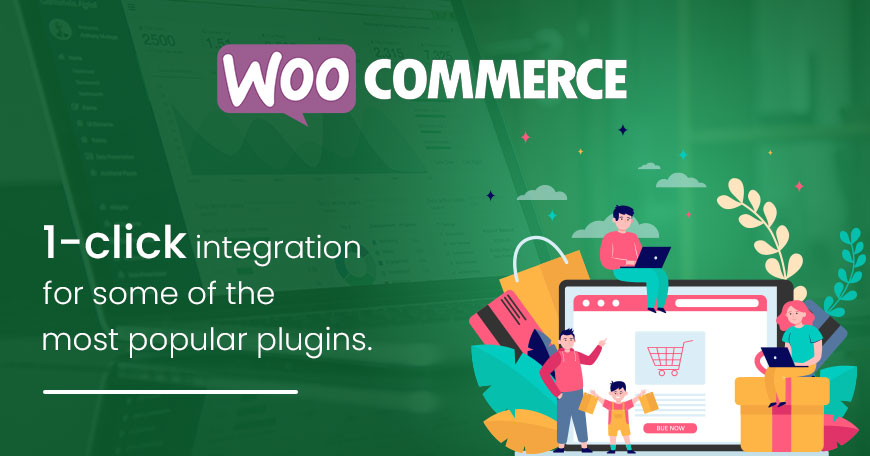
WordPress sellers may use the open-source WooCommerce platform. It is a WordPress plug-in that you may use to add e-commerce functionality to a website; it is not a standalone website builder. If you utilize this e-commerce website builder, you’ll probably want to collaborate with a developer.
Features include:
- Mobile-friendly stores to make your items seem beautiful on any device that supports HTML5 were specifically developed for WordPress and are connected to its environment
- Total control over consumer and corporate data; no third-party software is allowed. 350+ contributors worldwide.
- 100% open source for total control over the design and functionality of your website.
You have the freedom to manage website features like shipping connections, secure payments, inventory management, and tax administration with WooCommerce. Similar to how dozens of WordPress plug-ins, templates, and other extensions can be used to extend WordPress functionality, so can WooCommerce. If you need to make complex adjustments to your WooCommerce store, you may readily use its well-known wide pool of developers.
- Price:- Free
- G2 rating:- 4.4/5 ⭐
9. Volusion
Fastest e-commerce website builder available
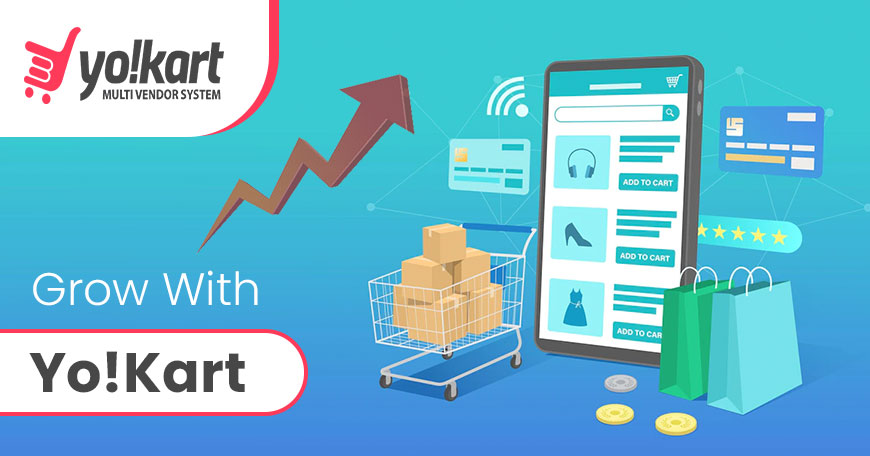
One of the original e-commerce website builders is Volusion. It assists you in quickly launching your business online and was founded in 1999. You can build a homepage and product pages, interface with over 30 payment channels, and sell an infinite number of items using its site-building tools. However, navigating the builder might occasionally be difficult.
Features include:
- Drag-and-drop content blocks for reviews, photographs, texts, and other types of material to alter page layouts.
- Transaction fees are not a part of any of Volusion’s initiatives.
- Mobile consumers should use responsive themes.
- CSS editor to customize certain website elements to your company’s requirements
- Possibilities for constant pricing for subscription-based enterprises
To observe how your online business is performing and where to make improvements, you can quickly access and analyze inventory and statistics. Additionally, it has an integrated “suggested products” function in its stores. A disadvantage of Volusion is that it cannot support the selling of digital products. So if you want to sell music, art, or ebooks, you might want to consider utilising a different builder.
- Price:- Plans start at $26/month.
- G2 rating:- 3.2/5 ⭐
10. Zyro
Best website builder for analytics and customer data

If you don’t have time to build from scratch then Zyro is a good option for you. You can simply create a lightweight website with the help of multiple e-commerce tools. The tools include the following features drag-and-drop builder with 24 expert-designed templates to build with. Within an hour you can create your online store.
Features include:
- It offers great features such as drag-and-drop, and a grid to add, edit and remove web elements.
- You can easily customize templates as per your project requirements.
- It provides CRM and manages emails, discounts, and coupon codes.
- You can work on advanced reporting and integration with tools like MoneyData, and Google Analytics.
- You can use marketing and SEO tools to launch campaigns easily.
- You will get access to a single dashboard for everything from inventory to tracking customer service.
Also, Zyro offers connectivity with Google Tag Manager, Google Analytics, and Facebook Ads to help you understand more about your audience and enhance your marketing and advertising initiatives. But, Zyro doesn’t have a free plan. You have to go for paid plans or premium plans for building your store.
- Price:- $11.49 per month.
- G2 rating:- 4.7/5 ⭐
11. Magento, now Adobe Commerce
It is one of the best options for selling digital products.
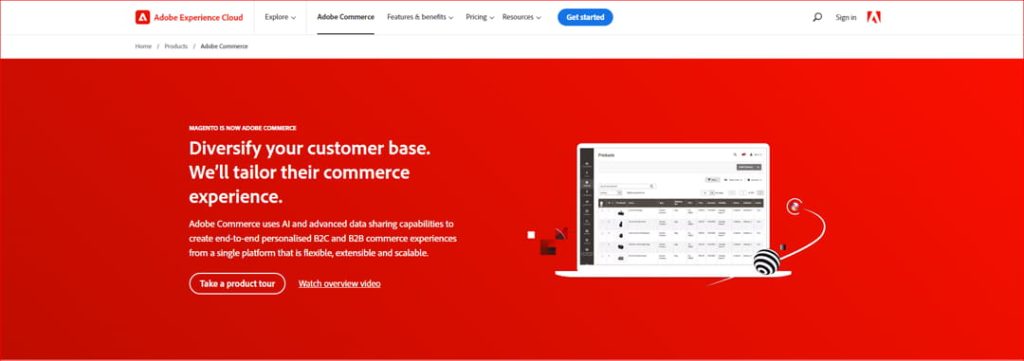
Magento, is an e-commerce builder aimed mostly at novices. It’s simple to use and allows you to sell across many e-commerce platforms to enhance sales. Magento is the greatest choice if you’re seeking complex e-commerce capabilities like bespoke report builders and integrated shipping services.
Features include:
- Integrated blogging platform
- Store builder with drag-and-drop functionality
- Possibility of managing all social media from a single dashboard
- Selz Pay (powered by Stripe) accepts major payment cards.
- Integrated shopping cart
- Sales insights in real time
Magento may be used to create an online presence with a website theme. Magento allows you to add Buy buttons to a typical company website or develop full-fledged storefronts to sell things.
- Price:- Free
- Magento Commerce:- $1,988
- Magento Commerce Cloud:- $2,688
- G2 rating:- 5/5 ⭐
How to Select an Online Store Builder
When choosing a platform, whether you’re a startup or building your tenth e-commerce site, keep the following factors in mind:
- Budget, business plans, and pricing:- How much money are you willing to spend on your store each year? What are your expansion plans? Some website builders charge more as you add more products to your site. Consider not only what your company needs to launch today, but also how many products you’ll offer in the future.
- Website-building skill level:- What level of technical expertise do you possess? Many builders employ drag-and-drop technologies to assist you in creating the finest e-commerce site possible, but you’ll still need fundamental abilities to design product pages, add goods to your shop, and configure any applications or plug-ins. Consider your previous experience with software and back-end developers.
- Customization:- Do you want a simple website to showcase your products? Or do you want more sophisticated capabilities such as adding sizing charts to product pages and a live chat window? Consider how you want your website to appear and feel, as well as what extra features you’ll need to make it happen.
- Support:- If you’re new to building an e-commerce website, you’ll most likely want assistance. Is your preferred web builder offering live assistance and tutorials? Consider a platform that can assist you in swiftly and simply resolving issues so you can have your store up and running and begin selling online.
- Payment gateways:- Payment gateways are required to securely collect payments from customers and to make payments simple for customers. Shop Pay’s express checkout function. Shopify also integrates with over 100 payment gateways, allowing you to provide the best alternatives for your customers no matter where they are in the globe.
Final words
Now that you know the options for the best e-commerce website builder, it’s time to put them to the test. Each choice has advantages and disadvantages, but perhaps you have a clearer understanding of which store builder is appropriate for your company.
A competent e-commerce website may propel your company forward. With all of these free website builder alternatives accessible, there’s no question you’ll discover the perfect one to create an online store that you’re proud of, impresses clients, and generates revenue for you automatically.









